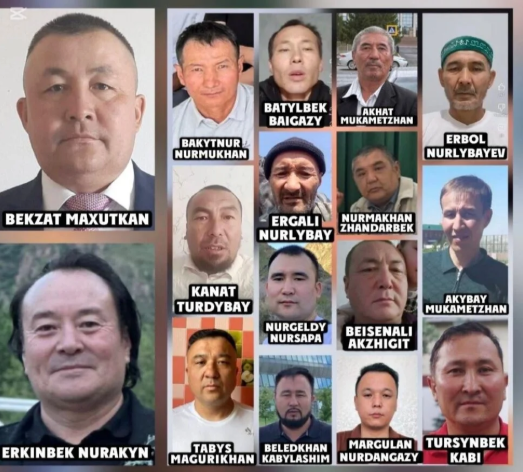Japan: Lawyers, Deprogramming, and the Unification Church Dissolution Case. 4. The Deprogrammers’ Manual
- info775148
- 13. 6.
- Minut čtení: 4
The late Pastor Kyoko Kawasaki published in 1990 a guide to deprogramming, expressly inciting the use of violence against the believers.
June 13, 2025
In 1990, a pastor from the UCCJ published an “Instruction Guide for Rescue” (hereafter “the Guide”) that provided all the details about what “rescue” consisted of.
Pastor Kyoko Kawasaki (1929–2012) of the Tanimura Church of the UCCJ wrote a book titled “The True Face of the Unification Church: The Reality of the Brainwashing and Countermeasures,” published by Kyobunkan (first edition in April 1990). In it, she (the pastor) advocated for and instructed on the “rescue” of Unification Church believers.
Kyobunkan is considered the largest and most influential Christian publishing house in Japan. Among publishers specializing in Christian literature, it stands out not only for its long history—dating back to 1887—but also for the breadth of its publications and the scale of its operations. It maintains a prominent bookstore in Tokyo and serves as a central hub for theological resources, making it the country’s leading institution of its kind.
The Guide published by Kyobunkan was also made available for purchase by the general public as an ordinary book.
Notably, the Guide was not presented overtly as an instruction manual but instead framed as the personal experience of a mother and her deprogrammed daughter. It gave recommendations to parents on how to proceed with the “rescue” of their kin believers.
The book recommended the following through the testimonies of the mother and the daughter:
Parents should devote themselves to persuading their children to leave the Church with a “no retreat” attitude, even quitting their jobs (p. 41).
When confining the believer, the family should carefully plan with relatives, etc. (p. 32).
Ambush the believer when they go to the public bath (p. 33), attack with a group, cover their mouth, force them into a car, and restrain their arms during transport (pp. 12–13).
In addition to the vehicle used to abduct the believer, another vehicle should be prepared to lead the way (p. 13).
During the drive, do not tell the believers the truth about the destination, but deceive them with lies (pp. 13–14).
Choose a confinement location where escape is difficult, such as a bed and breakfast facility (p. 33) (p. 16).
During confinement, keep watch with a group to prevent escape (p. 16).
At the outset of confinement, the believers may become extremely agitated or violent due to psychological stress, so restrain them with the help of relatives (p. 15). Even if the believers plead, “Let me go home, I feel terrible,” never release them (p. 34).
Call a specialized pastor to the place of confinement to deliver anti-Unification Church criticism to the believers (pp. 17–20).
If the believers claim, “This is a human rights violation” and refuse to speak with the pastor, tie up their legs, or use other means to compel obedience (p. 35).
If the believers realize they cannot escape, they may pretend to have left the Church. Even if they appear to listen obediently to the pastor, do not be deceived (pp. 16–18).
Sometimes, other Unification Church members may come looking for confined believers out of concern (p. 21), but with the cooperation of local residents, they can easily be turned away (p. 38).
If the believer is brought to Pastor Kawasaki, she can detect a feigned withdrawal and ensure the believer’s genuine exit from the Church (pp. 22–27).
Since leaving the Church is the believer’s path to happiness, the parents must commit to the deprogramming process with such resolve that they would even be willing to break their child’s legs if necessary (p. 29).
No matter how much the believer suffers during confinement, if the deprogramming efforts continue persistently to the end, the believer will ultimately come to express gratitude (pp. 28–29).
This Guide was subsequently filed in a case at Yokohama District Court, where UCCJ pastors were sued by Church members whose deprogramming attempt had failed. In this case, the pastors were defended by NNLSS lawyers Hiroshi Yamaguchi, Hiroshi Watanabe, and Masaki Kito.
The lawyers of the victimized believers filed the parts of the Guide containing recommendations to parents on “rescue.” In response, the NNLSS lawyers filed the entire book to highlight the remaining parts where the author criticized the Unification Church.
So, apart from the fact that the Guide was made public, it was also used by NNLSS lawyers, who filed it in a court case. Those lawyers were well aware of it and the recommendations it contained.

Additionally, the lawyers of NNLSS participated in the “rescue” activities by referring parents to deprogrammers in the first place, with total knowledge of the violent means that would be used to forcefully deconvert the believers involved.
This is further evidenced by the testimonies in court by lawyer Yamaguchi and some deprogrammer pastors.
Source: bitterwinter.org











Komentáře